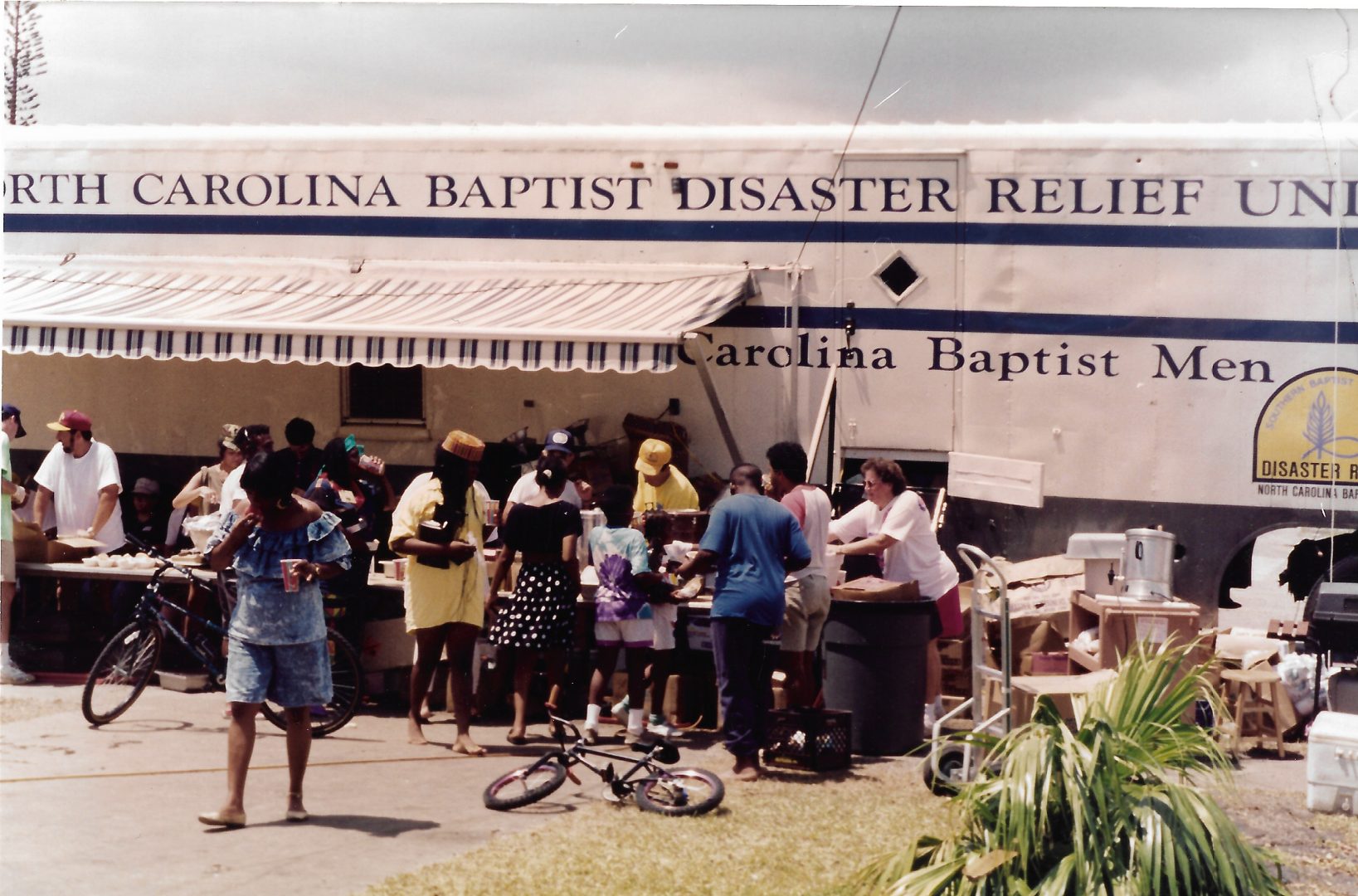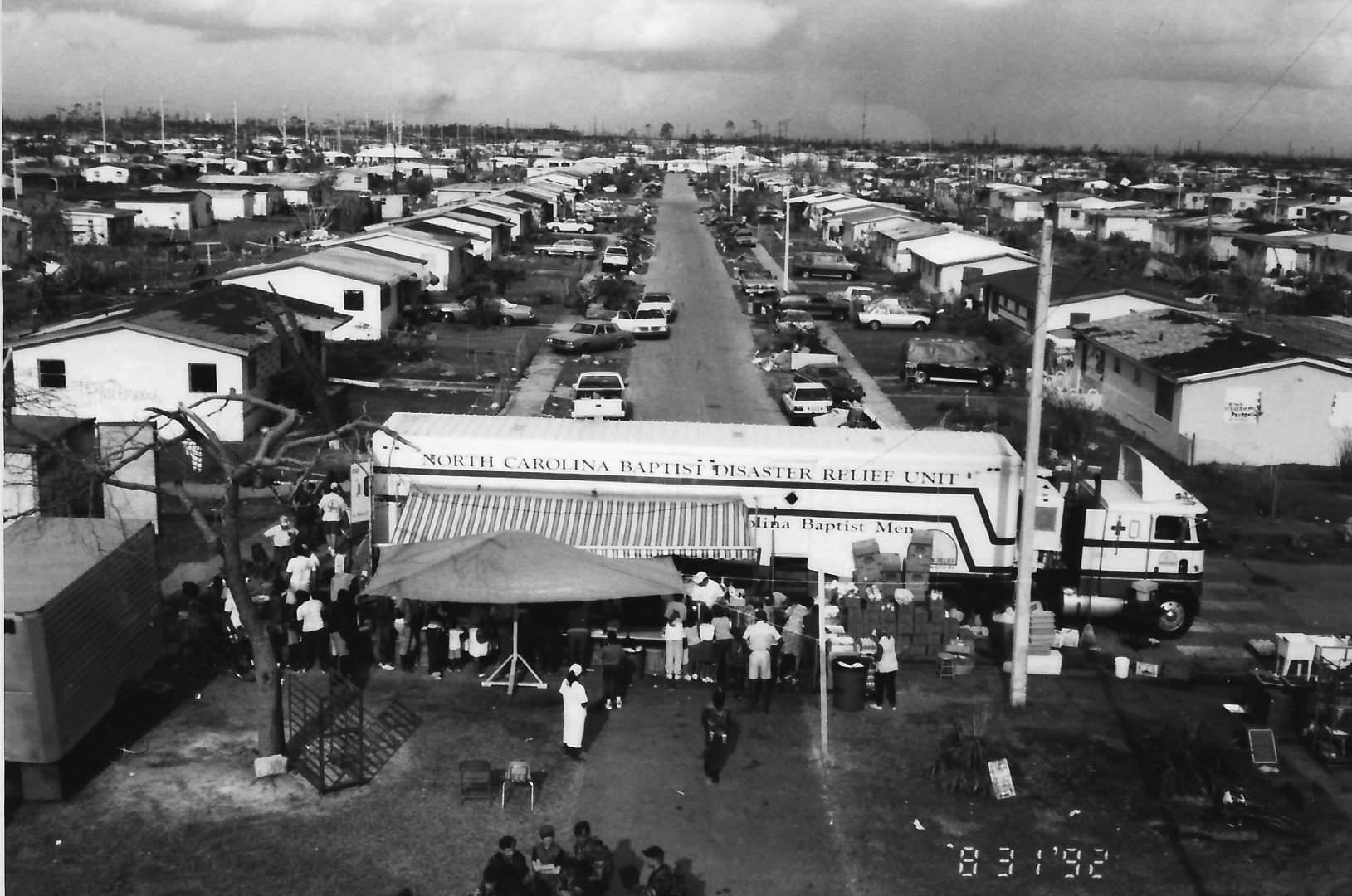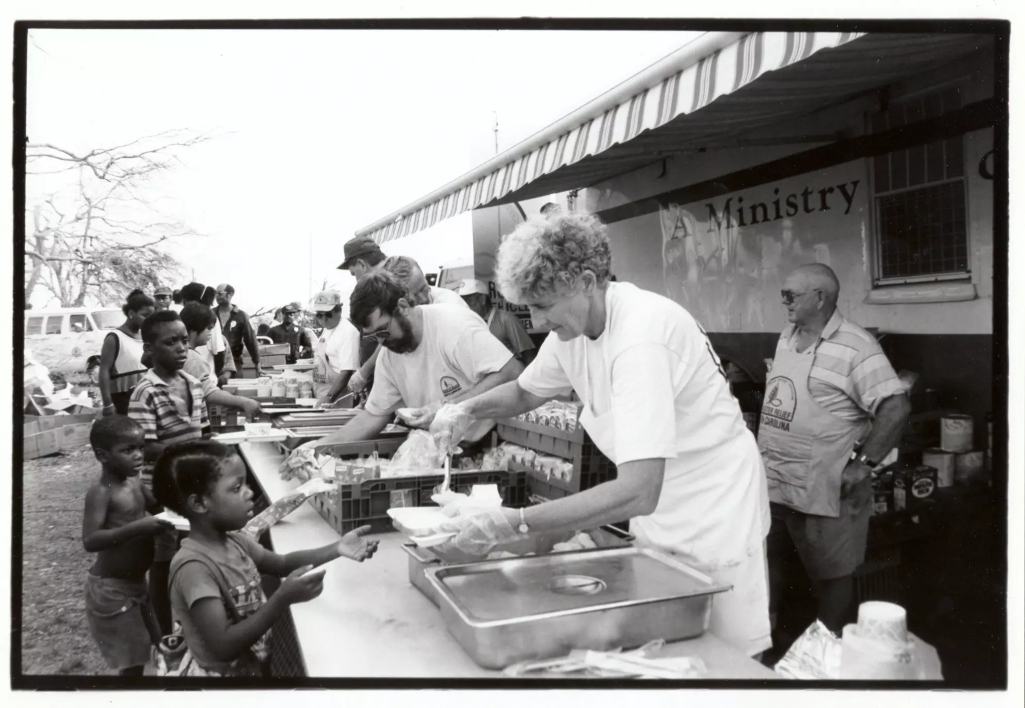
As word of the devastation caused by Hurricane Andrew 30 years ago last month made it to North Carolina, Lyman Fisher knew he couldn’t just sit by and do nothing. He wanted to help.
“I just have to go,” he told his wife, Linda.
Lyman and Linda left for South Florida with N.C. Baptist Disaster Relief soon after. Hurricane Andrew had recently hit the area with sustained wind speeds of 141 miles per hour. The Category 5 hurricane had left unprecedented devastation from the northwestern Bahamas to South Florida to south-central Louisiana. According to the National Weather Service, the hurricane did $26.5 billion in damage, which made it the “most expensive natural disaster in U.S. history as of 1992.”
As Lyman helped to repair homes hit by the hurricane, he got hooked on ministry. Before Hurricane Andrew, his wife had called him a “pew potato,” because he rarely did anything but sit and listen at church. But God changed Lyman’s life on that 1992 trip.
Before Lyman passed away in 2021, he had participated in disaster relief trips in North Carolina and throughout the United States. He also served as the state’s disaster relief volunteer coordinator.
But Lyman’s life wasn’t the only one that changed after Hurricane Andrew. More than 2,000 North Carolinians volunteered in the aftermath of the hurricane, according to a follow-up article in the Biblical Recorder. For many of them, it was their first time participating in disaster relief.
In August of 1992, Richard Brunson was in his first year leading N.C. Baptist Disaster Relief as the director of N.C. Baptist Men, now known as Baptists on Mission. He calls the North Carolina response a defining moment for the state’s disaster relief ministry.
“I think everybody, including the government and states, learned from Andrew and got better,” Brunson said. “So that when Katrina or Sandy came along, we were better at it. We had better equipment, more equipment, but [Hurricane Andrew] was the disaster that was the first for a lot of things. And so we learned a lot more coming out of that.”

Texas Baptist Men started the first Southern Baptist Disaster Relief unit in the late 1960s to respond to hurricane damage in the state. Other state Baptist Men groups slowly followed the Texas lead. North Carolina started its unit in 1977 with the purchase of a 45-foot used trailer.
When Hurricane Andrew hit, N.C. Baptist Men believed its unit, which had been active after Hurricane Diana and Hurricane Hugo in the 1980s, could serve 3,000 meals a day. In 30 days, N.C. Baptists served 175,000 meals, with as many as 10,000 in a single day.
Feeding was only a part of N.C. Baptists’ response in Florida following Andrew. They sent 30 truckloads of building materials to help with the rebuild process. Churches also donated more than $600,000 to a special disaster relief fund. North Carolina churches sent teams for more than a year to continue the help after the initial focus left the area.
“Thank God for North Carolina. Thank God for Southern Baptists – because they came.”
Cecil Seagle
Before Hurricane Andrew, most Southern Baptist Disaster Relief work – in North Carolina and beyond – involved feeding and didn’t engage long-term rebuilding efforts. That changed with Andrew. In the first year after Hurricane Andrew, Florida Baptists – with the help of North Carolina Baptists – helped to rebuild more than 700 homes in south Dade County. In the following years, the rebuild efforts became a large part of Baptist relief work.
“Thank God for North Carolina. Thank God for Southern Baptists – because they came,” said Cecil Seagle, who led Florida Baptist Disaster Relief at the time. “Somehow the Father allowed us to survive all of that and actually to thrive. It was a marker for kingdom work across South Florida.”
North Carolina Baptist volunteer Glenn Holland had participated in previous disaster relief efforts, but Hurricane Andrew was the first time he served in a rebuild effort. He remembers being assigned to help with framing and putting in insulation and sheetrock in a house. While working on the house, the team was asked to help an African-American church meeting in a local movie theater.
Holland participated in the rebuild trip in August of 1993, a year after the hurricane. It was the first of many experiences helping people rebuild their homes and churches after disasters through N.C. Baptist Disaster Relief.
“It was all about the kingdom,” Holland said.
In the early 1990s, as well as today, N.C. Baptists fund their disaster relief work through the North Carolina Missions Offering. More than $2 out of every $5 donated to the mission offering goes to Baptists on Mission, which coordinates disaster relief and operates 18 other ministries. The offering completely funds the ongoing ministry of disaster relief. Special donations help pay for some of the expenses related to specific disaster relief responses.
“Our ongoing ministry, which happens when a disaster is not in the news, for us is totally funded by the missions offering,” said Brunson, who has served as the executive director of Baptists on Mission for three decades now. “That’s what helps us buy equipment and keep equipment ready to deploy, and helps us set up our trainings for our volunteers. All that comes out of our state missions offering, so for us, we’re totally dependent on the offering for the ongoing ministry.”
(EDITOR’S NOTE – Tobin Perry is a freelance writer with more than 20 years of writing experience with Southern Baptist organizations. He can be reached at TobinPerry.com)

